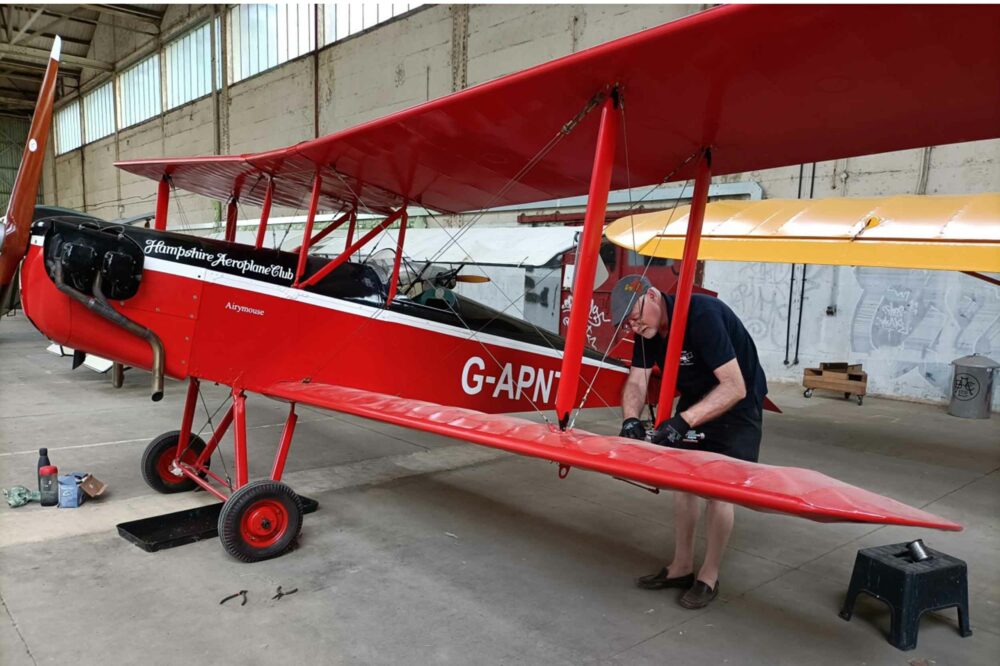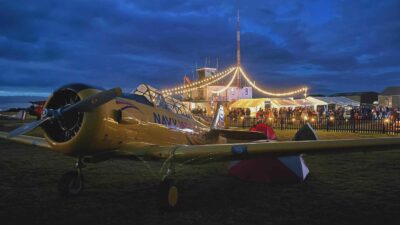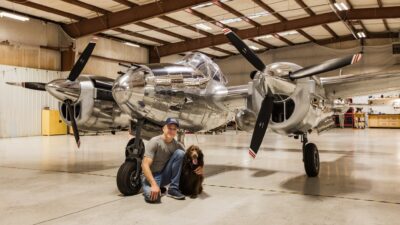Former CEO of the Light Aircraft Association (LAA) Steve Slater has won an award for his painstaking restoration of ‘Airymouse’, a 1930 Currie Wot single-seat biplane.
The Restoration Award was presented at the National Transport Trust’s (NTT) annual awards. It was received by Anne Hughes on behalf of Steve from the NTT’s Royal Patron, Anne, HRH The Princess Royal.
Airymouse was built to the original 1930s drawings for Hampshire Aeroplane Club by its designer Joe Currie, a former WW1 pilot and engineer. It is a classic wood and fabric design and the oldest example of the type.
In the late 1950s, it was acquired by Westland’s chief test pilot Harald Penrose, whose own flying career began in the 1920s. He wrote a series of books, one of which, Airymouse, chronicled his flying the biplane over the English countryside.
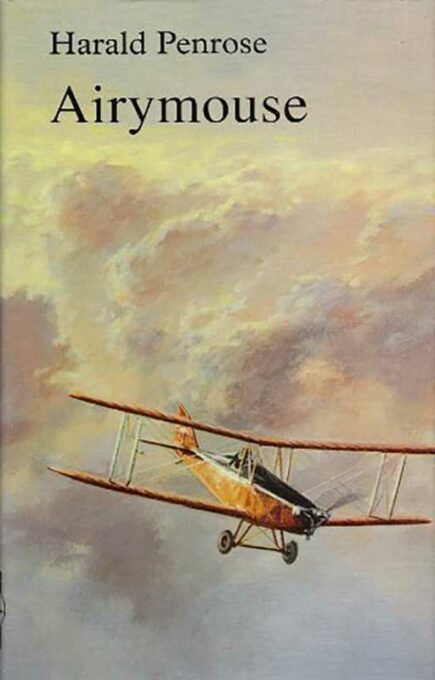
Airymouse book
Even then, the aircraft was an anachronism: a 1930s aircraft with a tailskid and no brakes, and, to quote its original owner, “A diminutive biplane of insignificant horsepower”.
NTT Awards director Paul Brook said, “Airymouse was acquired by Steve Slater in 2016 and returned to flight after several years in storage. In early 2022, he decided deeper restoration was required, so the fabric was stripped from the airframe and its woodwork repaired.
“The aircraft was then re-covered and repainted by Steve and friends. Final re-assembly is currently underway.
“Airymouse is a rare example of a low-cost, aircraft which pioneered the early post-war sport flying movement. As such, we were keen that Steve’s excellent project should be recognised with a National Transport Trust Restoration Award.”
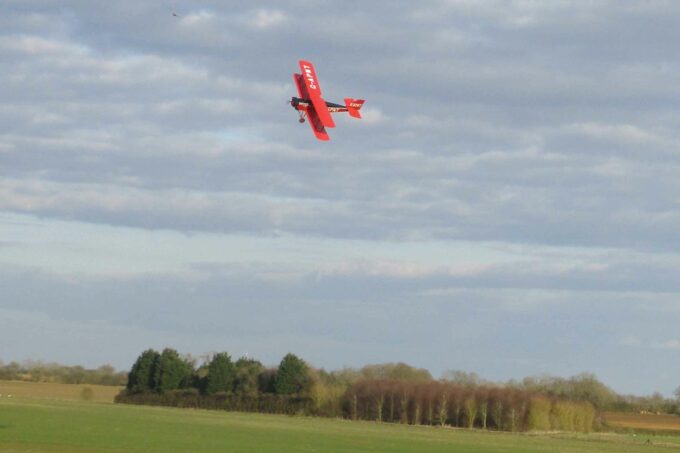
Airymouse flies again
Deadline for 2024 awards
Next year’s National Transport Trust Annual Restoration Awards have a deadline for nominations of 1 December 2023.
The NTT said, “The project should be well on the way to completion, with the lion’s share of the work completed by the owner or project group rather than a commercial restoration. There should be significant effort to maintain a high degree of originality in projects destined to be widely enjoyed by the public.”
Click here for more details


